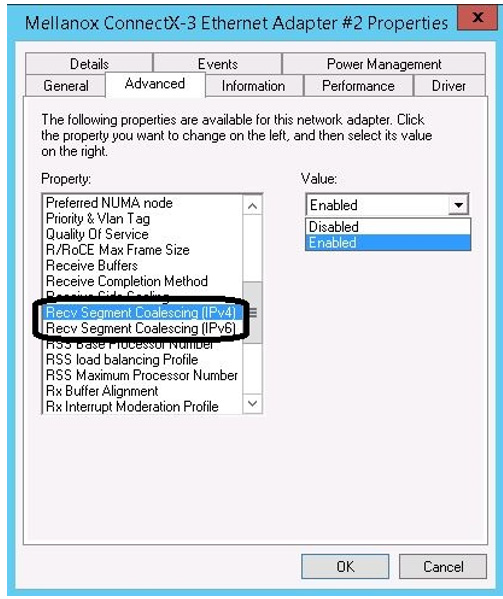Receive Segment Coalescing (RSC)
Processing packets on the receive side for Ethernet is done on a per-packet basis by the miniport driver and the stack above it. The RSC feature reduces the CPU utilization when the driver coalesces segments belonging to the same TCP connection, and indicated as one big packet. This feature is enabled in the driver by default for both IPv4 and IPV6, and for both Physical Function and Virtual Function.
It is advisable to disable the RSC feature when running latency sensitive traffic.

Supported Operating Systems:
Windows Server 2012
Windows Server 2012 R2
Windows Server 2016
The above specified operating systems flavors support the feature by default. They must be enabled in Windows Client 8.0, 8.1 and 10, using netsh commands.
The full RSC counters list is specified in the Mellanox Adapter Diagnostics Counters table. All counters apply to Ethernet ports only.
|
RSC Aborts |
Number of RSC abort events. That is, the number of exceptions other than the IP datagram length being exceeded. This includes the cases where a packet is not coalesced due to insufficient hardware resources. |
|
RSC Coalesce Events |
Number of RSC coalesced events. That is, the total number of packets that were formed from coalescing packets. |
|
RSC Coalesce Octets |
Number of RSC coalesced bytes. |
|
RSC Coalesce Packets |
Number of RSC coalesced packets. |
The RSC counters can also be viewed via PowerShell, as shown in the following example:
